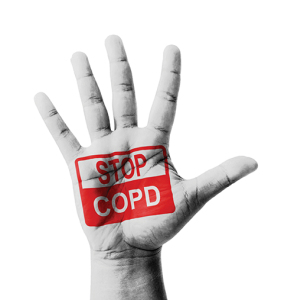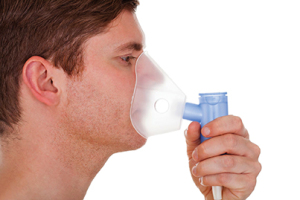COPD in Alabama
Posted on November 1, 2014 by bob in Health
“9.1% of residents in Alabama have COPD…higher rates of tobacco use may contribute to a high prevalence of COPD in southern states.”
November is COPD Awareness Month, an opportune time to learn about the third leading cause of death in the U.S. and a disease that kills one person every four minutes. Alabama, unfortunately, has one of the highest rates of COPD in America.
Chronic obstructive pulmonary disease (COPD) is an umbrella term used to describe progressive lung diseases including emphysema, chronic bronchitis, refractory (non-reversible) asthma, and some forms of bronchiectasis. This disease is characterized by increasing breathlessness.
People with COPD can have a range of symptoms, including cough, wheeze, sputum production and breathlessness. Many people mistake their increased breathlessness and coughing as a normal part of aging.
COPD affects over 24 million Americans. The National Heart, Lung and Blood Institute estimates that 12 million adults have COPD, and another 15 million are undiagnosed or developing COPD. COPD is the third leading cause of death in the United States, killing more women than men each year.
COPD in Alabama
9.1 percent of residents in Alabama have COPD. Prevalence of COPD varies considerably by state, from less than four percent in Washington and Minnesota to more than nine percent in Alabama and Kentucky. The states with the highest COPD prevalence are clustered along the Ohio and lower Mississippi Rivers. According to David Mannino, M.D. professor of Medicine at the University of Kentucky and a board member of the COPD Foundation, higher rates of tobacco use may contribute to a high prevalence of COPD in southern states.
According to a recent Gallup poll, 29 percent of Kentucky residents smoke cigarettes, while 25 percent of people living in Alabama and Tennessee smoke. Minnesota and Washington, which tied for second lowest in COPD prevalence, also have the lowest smoker rates — 17 and 19 percent, respectively. Other factors include:
— Occupational hazards — Agriculture is a dominant industry in the South — 30 percent of Kentucky’s economic activity is related to farm production, and 21 percent of all jobs in Alabama are agriculture-related.
 — Socioeconomic factors can also play a role in the development of COPD. A Centers for Disease Control and Prevention survey found that, nationwide, 9.9 percent of respondents with household incomes of less than $25,000 had COPD, compared with 2.8 percent of respondents with incomes higher than $75,000. According to the U.S. Census Bureau, median household incomes in high-COPD states are lower than incomes in states with lower rates of COPD. People with less money may have less access to medical care, and are more likely to develop respiratory infections early in life, another risk factor for COPD.
— Socioeconomic factors can also play a role in the development of COPD. A Centers for Disease Control and Prevention survey found that, nationwide, 9.9 percent of respondents with household incomes of less than $25,000 had COPD, compared with 2.8 percent of respondents with incomes higher than $75,000. According to the U.S. Census Bureau, median household incomes in high-COPD states are lower than incomes in states with lower rates of COPD. People with less money may have less access to medical care, and are more likely to develop respiratory infections early in life, another risk factor for COPD.
How is COPD treated?
There are treatments available that can improve a patient’s quality of life, such as medication, vaccination, pulmonary rehabilitation, oxygen therapy and surgery. These therapies are used to help the patient relieve symptoms, reduce the frequency and severity of exacerbations, and improve overall health and ability to exercise.
Smoking cessation is the only intervention that will reduce the progression of COPD. Those who have trouble quitting should talk with their doctor about programs and products that can help, and consider joining a support group. Many hospitals, workplaces, and community groups offer classes to help people quit smoking.
It is important for those living with COPD to avoid secondhand smoke and places with dust, fumes, or other toxic substances that can be inhaled. Proper diet is also an important consideration, and patients should eat smaller, more frequent meals, resting before eating and taking vitamins or nutritional supplements.
Depending on the severity of the disease, one’s doctor may prescribe short-acting or long-acting bronchodilators. Short-acting bronchodilators last about four to six hours and should be used only when needed. Long-acting bronchodilators last about 12 hours or more and are used every day. The use of bronchodilators relaxes the muscles around the airways, which facilitates breathing.
Pulmonary Rehabilitation
Comprehensive pulmonary rehabilitation, including exercise, strength training, education, effective COPD self-management, and nutritional advice, have all been shown to improve quality of life and to reduce exacerbations and hospitalizations in individuals with COPD. For optimal management of COPD, a combination of these strategies and a multidisciplinary team approach involving physicians, respiratory therapists, nurses and other healthcare professionals is essential.
For those with severe COPD and low levels of oxygen in their blood, oxygen therapy can improve breathing. For this treatment, oxygen is administered through nasal prongs or a mask. For some people who have severe COPD, using extra oxygen for most of the day can help them:
–Complete tasks or activities, while having fewer symptoms
–Protect their hearts and other organs from damage
–Sleep more during the night and improve alertness during the day
–Live longer
Lung damage from COPD is irreversible, and the quality of life for a person suffering from COPD diminishes as the disease progresses. While COPD is currently incurable, it is still treatable. Individuals in every state, and of every race and culture, should take steps to help maintain a good quality of life by contacting a physician to determine a diagnosis, learn more about the disease, and develop the best strategies for care.
When a diagnosis is made in the early stages of COPD, and an individual is properly treated, the prognosis is improved and the rate of lung decline can be significantly slowed. Prevention and early diagnosis are critical factors in improving one’s quality of life. If you suspect you might be at risk for COPD take a five-question screener on the COPD Foundation website (http://www.copdfoundation.org/Screener.aspx).
John W. Walsh, who was diagnosed with Alpha-1-related genetic COPD in 1989, is the President and Co-Founder of the COPD Foundation, a not-for-profit organization dedicated to preventing and curing chronic obstructive pulmonary disease and improving the lives of all people affected by COPD. He can be reached at 1-866-316-COPD (2673) or info@copdfoundation.org.











